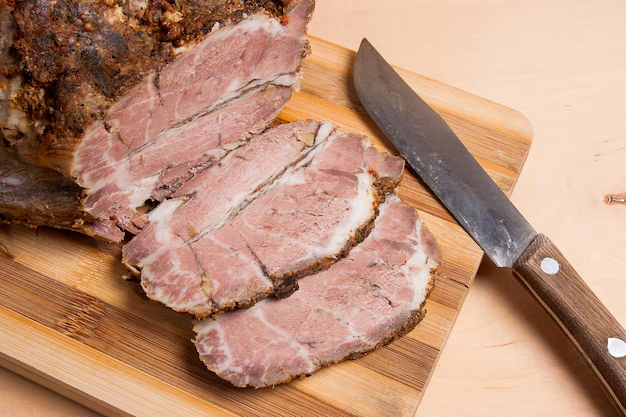How Long Can You Store Roast Beef in the Refrigerator and Keep It Fresh?
Picture this: You’ve cooked a delicious roast beef dinner, and you have leftovers that you can’t wait to enjoy. But a question lingers — how long will that roast beef stay fresh in the refrigerator? Ensuring your leftover roast is safe to eat involves knowing a few food safety fundamentals and wise storage practices.
In this article, we dive deep into this vital kitchen conundrum, exploring storage techniques, freshness indicators, and tips to maximize your roast beef's shelf life using a reader-friendly approach.
🥩 Understanding Roast Beef Shelf Life
Keeping roast beef safe to eat requires understanding its longevity in the refrigerator. In general, cooked roast beef lasts about 3 to 5 days in the refrigerator. However, several factors can influence this timeframe:
- Initial Cooking Temperature: Ensure roast beef reaches an internal temperature of 145°F (62.8°C), which kills harmful bacteria.
- Quick Cooling: After cooking, let the roast cool to room temperature swiftly before refrigeration.
- Storage Conditions: Keep a consistent refrigerator temperature at or below 40°F (4°C) to maintain freshness.
🔍 Factors That Impact Shelf Life
- Air Exposure: Airtight containers or tightly wrapped packaging prevent bacteria growth and moisture loss.
- Cross-Contamination: Avoid storing raw and cooked meats together to prevent the spread of bacteria.
- Quality of the Beef: Fresher meat can last longer if stored properly compared to beef nearing its sell-by date.
📦 Best Practices for Storing Roast Beef
Proper Packaging Techniques
Packaging is crucial in extending the shelf life of roast beef. Consider these tips for optimal storage:
- Airtight Containers: Use rigid containers or Ziploc bags to minimize air exposure.
- Aluminum Foil or Plastic Wrap: Tightly wrap the beef to prevent drying out and flavor loss.
- Vacuum Sealing: For extended storage, consider vacuum-sealing for superior protection against air and moisture.
Storing in the Refrigerator
Placement in the fridge also matters:
- Cool Zones: Store beef in the coldest part of the refrigerator, typically near the back or on the lower shelves.
- Separate from Raw Meat: Keep cooked beef separate from raw meat to avoid cross-contamination.
⚠️ Spotting Spoilage Signs
Knowing when roast beef has gone bad is as important as knowing how to store it. Here’s what to watch for:
Common Indicators of Spoilage
- Unpleasant Odor: A sour or rancid smell is a clear sign of spoilage.
- Discoloration: Gray or green hues indicate bacterial growth.
- Slimy Texture: A sticky or slimy surface means microbial activity has begun.
When in Doubt, Throw It Out
If any spoilage signs are present or if the beef is stored beyond 5 days, it is safer to discard it to prevent foodborne illness.
🗓️ Maximizing Roast Beef Longevity
Freezing for Extended Storage
If you can't consume your roast beef within the typical 3-5 day period, freezing is a great option. Here’s how to do it right:
- Wrap it Well: Use freezer-safe bags or tightly wrap in aluminum foil to prevent freezer burn.
- Label It: Date the package to keep track of storage time.
- Thaw Properly: Thaw in the refrigerator to keep the beef safe by avoiding the “danger zone” (40°F-140°F).
Keeping Track of Freezing Times
- Up to 2-3 Months: Roast beef can remain flavorful and safe when frozen for up to three months without a significant loss in quality.
📝 Quick Tips & Takeaways
- Refrigeration Timeline: Enjoy within 3-5 days.
- Freezing Option: Safely freeze for up to 3 months.
- Spot Spoilage: Rely on senses (smell, color, texture) to detect freshness.
📊 Key Insights Table
| Aspect | Recommendations | Indicators to Watch |
|---|---|---|
| Shelf Life | Fridge: 3-5 days Freezer: 2-3 months | Sour smell, odd colors, slimy texture |
| Storage Methods | Airtight containers, vacuum seal | Wrapping tightness affects freshness |
| Spoilage Checks | Smell, color, texture assessments | Regularly check for any noticeable changes |
| Freezing | Use freezer-safe wraps, date labeling | Avoid storing beyond the recommended timeframe |
This handy table ensures you have the essentials at your fingertips, helping you manage food storage confidently.
🧠 Wrapping It All Up
Navigating the nuances of food safety with roast beef doesn’t have to be daunting. By implementing smart storage practices, keeping an eye on spoilage signs, and knowing when to freeze leftovers, you can ensure every bite is enjoyable and safe. Remember, informed decisions in your kitchen lead to delicious and healthy meals!
